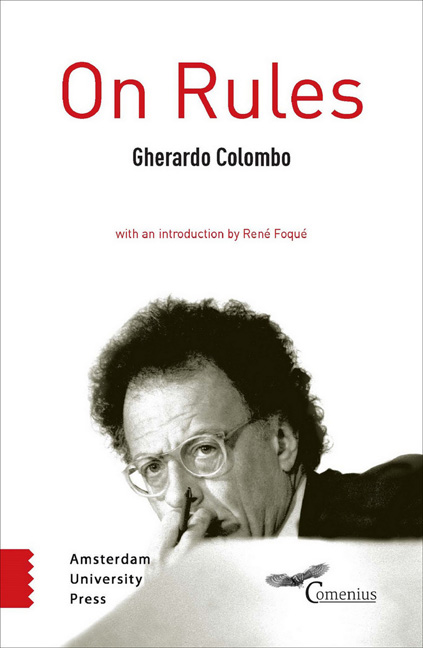Book contents
- Frontmatter
- Introduction: Gherardo Colombo’s Concern for the Democratic State under the Rule of Law: A Work in Progress
- Why?
- 1 An Imaginary Country
- Contents
- Part I The Ambiguities of Justice
- Part II Horizontal Society and Vertical Society
- Part III Towards a Horizontal Society
- Part IV How Do We Get There?
- Conclusion
- Acknowledgments
17 - Victim and Offender
Published online by Cambridge University Press: 24 December 2020
- Frontmatter
- Introduction: Gherardo Colombo’s Concern for the Democratic State under the Rule of Law: A Work in Progress
- Why?
- 1 An Imaginary Country
- Contents
- Part I The Ambiguities of Justice
- Part II Horizontal Society and Vertical Society
- Part III Towards a Horizontal Society
- Part IV How Do We Get There?
- Conclusion
- Acknowledgments
Summary
How can a victim be compensated, how can the situation be repaired? In most cases, victims are satisfied with the restoration of the situation that existed prior to the offence, compensation for the distress they have suffered, and the recognition of the fact that their rights have been violated. Those who have their cars stolen are satisfied (compensated) with its retrieval, reimbursement for any damage to the vehicle, the recognition of the inconvenience caused by being deprived of it, and the community's acceptance of their reasons. Those who are defamed in a newspaper or on television are satisfied if their reputation is restored by a retraction, if they receive compensation for the distress resulting from having been maligned, and if they receive an apology. There are countless similar situations in which the victims can be compensated in similar ways.
But there are other offences whose consequences cannot be eliminated – or at least not completely – by subsequent restitutive behaviour. Those with a limb amputated, those subjected to torture, the parents of a child killed in a road accident, a sexually-assaulted woman, the survivors of a murdered person: how can they be compensated? It is evident in these cases that what is lost cannot be recuperated: the loss of a limb, of physical integrity, of a relative cannot be made up for. The value lost, however, can be restored or the irretrievable loss can be compensated for to some extent. Different methods have been experimented with, and have often yielded positive results.
In South Africa, the Truth and Reconciliation Committee managed to bring back peace to a country that went from the dictatorship of a white minority over a black majority, to apartheid, to democracy. The atrocities committed by whites to keep citizens of colour segregated often included torture and murder. One would have expected the outbreak of civil war, but this was avoided precisely because the Commission was able to initiate a process whereby victims and torturers eventually reconciled.
The Commission was formed as a consequence of recognising that (as Archbishop Desmond Tutu declared in an interview some years ago) if a mechanism had not been devised to cope with the injustices of the past, those very injustices would have continued to plague the new government, threatening the fragile structure of the young democracy.
- Type
- Chapter
- Information
- On Rules , pp. 91 - 94Publisher: Amsterdam University PressPrint publication year: 2016



